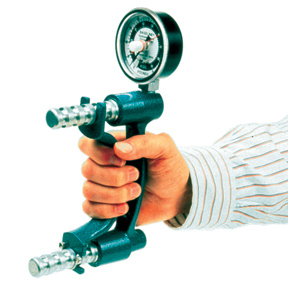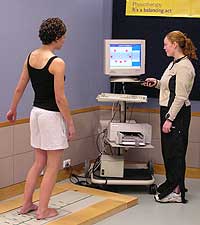Biofeedback
Biofeedback is a process of electronically using information from the body to teach an individual to recognize what is going on inside the own brain, nervous system, and muscles. Biofeedback refers to any technique, be it visual, auditory, or kinesthetic, that uses instrumentation to give a person immediate and continuing signals on changes in a bodily function that he or she is not usually conscious of, such as fluctuations in blood pressure, brain wave activity, or muscle tension. Theoretically, and often in practice, information input enables the individual to learn to control the "involuntary" function.
Biofeedback is a training process in which the client becomes aware of and learns to selectively change physiological processes with the aid of an external monitor. A monitoring instrument is placed on the appropriate area of the body. The machine provides an initial readout. The client is instructed how to change the monitored process, and as change occurs, the machine "feeds back" that information. By mentally changing a biological function, the client learns to gain control over it. In time, the client learns to control the process without needing an assist from the instrument. This is known as the "self-efficacy" model. Improved motor performance through motor learning (feedback and knowledge of results) is one goal of biofeedback.
Indications for Use
- Muscle strengthening
- Muscle re-education
- Relaxation; decreasing muscle activity
- Postural re-education
- Pain management
- Health and Wellness Promotion: Stress management
Types of Biofeedback
Muscle tension, pulse rate, blood pressure, skin temperature, and electromyography (EMG) and electroencephalography (EEG) readings are some of the physiological processes that can be consciously modified with biofeedback.
Movement, whole body balance, and joint displacement can also serve as sources of biofeedback
Clinical Examples of Biofeedback
- Mirror:
 volitional movement, neuromuscular re-education
volitional movement, neuromuscular re-education
- Tape: tension changes with motion/inherent stiffness provides feedback (e.g., Kinesiotape, Leuko/McConnell taping)

- EMG units (surface or needle)
- Thermometer (digital temperature monitoring)
- Spirometer (pulmonary function)
- Dynamometer (measures force production/strength from a muscle or muscle group(s))

- Stabilization cuff (measures pressure exerted during isometric spinal muscle contraction)
- Balance Master (visual and kinesthetic feeback clincal machine for static standing balance)

Successful Patient/Client Profile
- Is active and willing
- Understands the goal of treatment (increased volitional control in the context of an impairment or functional limitation)
- Understands the process to achieve the goal
- Has a fairly intact motor and sensory system
- PTA and client need to know the "correct" outcome/performance of the activity
- Has opportunity to practice as component of home program
Successful Treatment Outcome
- Increased locus of control (patient/client can exhibit control over activity that was previously perceived and involuntary)
- Actively participates in control of impairment/functional limitation
- Increased awareness and development coping/adaptive skills

